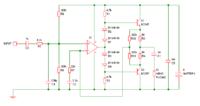
- Joined
- Jan 22, 2008
- Messages
- 53,497
- Helped
- 14,801
- Reputation
- 29,891
- Reaction score
- 14,368
- Trophy points
- 1,393
- Location
- Bochum, Germany
- Activity points
- 302,695
I wonder how you ever want to design electronic circuits if you don't manage to find out the essential data of the components available in your favourite electronics shop? I learned it as a school boy.



